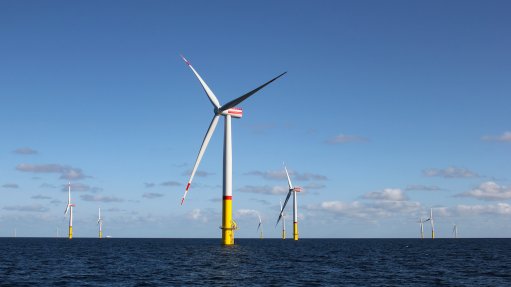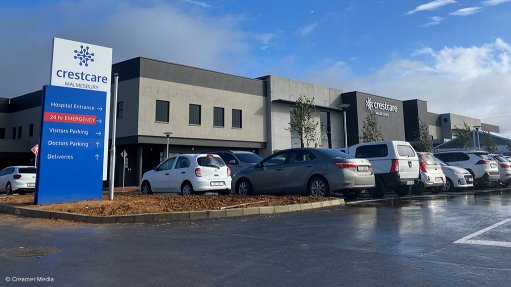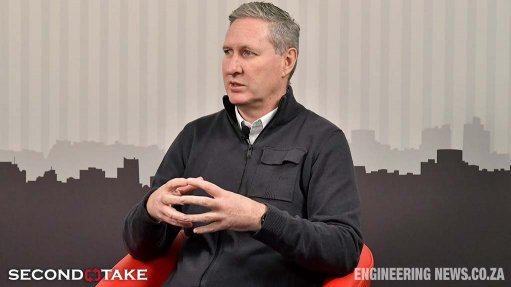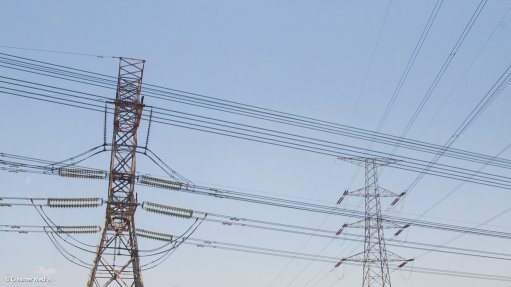LKP advances explosion-proof lighting
Designed to prevent any internal sparks or heat from igniting the hazardous materials in its surroundings, lighting solutions provider Light Kinetics Projects (LKP) introduced its explosionproof lighting for environments “where even a small spark can lead to catastrophic explosions”.
LKP CEO Russ Gittleson explains that one of the main challenges is ensuring that the fixtures can contain any internal explosions by incorporating a robust design that can withstand harsh environments while meeting stringent regulatory standards.
Additionally, the fixtures must be designed to prevent any potential ignition sources, which requires high-quality materials and precise electronic, mechanical, thermal and optical engineering.
Gittleson explains that adhering to standards such as the IEC/SANS 60079, ATEX 2014/34/EU and ARP 0108 in the design and application of explosionproof lighting fixtures ensures safety and reliability.
He elaborates that SANS 60079 and ATEX 2014/34/EU cover the requirements for equipment used in explosive and potentially explosive atmospheres, ensuring that the fixtures are designed to prevent ignition.
“Adherence to these standards is crucial for safety and legal and electrical compliance reasons,” notes Gittleson.
In addition to adhering to safety regulations, hazardous area classifications such as Zones 0, 1 and 2 for gases, should be taken into account to ensure that the correct fixtures are installed.
Gittleson points out that Zones 0 and 20 indicate areas with a constant presence of explosive gases or dust, whereas Zones 1 and 21 are areas where such substances are likely to occur during normal operations.
He adds that Zones 2 and 22 are areas where explosive atmospheres are unlikely to occur but may happen for short periods. The classification affects the type of explosionproof lighting required, with higher-risk zones needing more robust and fail-safe fixtures.
Ingress protection (IP) ratings should also be considered when assessing which light fixtures should be used for hazardous environments.
According to Gittleson, in hazardous environments, a high IP rating, such as IP66 or IP67, is crucial to ensure the fixtures are dust-tight and can withstand immersion in water.
He notes that this will prevent any external particles or moisture from entering the fixture and causing a potential ignition source.
Gittleson stresses that companies should use certified fixtures, as this ensures that the fixtures have been tested and meet safety standards to prevent explosions.
“The consequences of using substandard products can be catastrophic, including loss of life, severe infrastructure damage and significant environmental impact,” warns Gittleson.
Additionally, he suggests that companies use the fixtures offered by UK specialists in explosionproof LED lighting Raytec and Finnish specialists Atexor.
Raytec’s fixtures are exclusively made in the UK from extruded and cast aluminium housings, which provide “superior” long-term durability and compliance with IEC System for Ex Certification for Use in Explosive Atmospheres and ATEX Ex standards, as well as offering compliance with extreme UV exposure to direct sunlight and, uniquely, on-site serviceability.
Moreover, Raytec and LKP use three-dimensional modelling and simulation software to design accurate lighting layouts tailored to specific industrial environments by working with facility engineers and design consultants.
This approach allows LKP and Raytec to accurately predict light distribution and identify potential hazards, ensuring optimal safety and efficiency. It also helps in selecting the right type and number of fixtures, helping to save on energy and costs, while enhancing performance.
Comments
Press Office
Announcements
What's On
Subscribe to improve your user experience...
Option 1 (equivalent of R125 a month):
Receive a weekly copy of Creamer Media's Engineering News & Mining Weekly magazine
(print copy for those in South Africa and e-magazine for those outside of South Africa)
Receive daily email newsletters
Access to full search results
Access archive of magazine back copies
Access to Projects in Progress
Access to ONE Research Report of your choice in PDF format
Option 2 (equivalent of R375 a month):
All benefits from Option 1
PLUS
Access to Creamer Media's Research Channel Africa for ALL Research Reports, in PDF format, on various industrial and mining sectors
including Electricity; Water; Energy Transition; Hydrogen; Roads, Rail and Ports; Coal; Gold; Platinum; Battery Metals; etc.
Already a subscriber?
Forgotten your password?
Receive weekly copy of Creamer Media's Engineering News & Mining Weekly magazine (print copy for those in South Africa and e-magazine for those outside of South Africa)
➕
Recieve daily email newsletters
➕
Access to full search results
➕
Access archive of magazine back copies
➕
Access to Projects in Progress
➕
Access to ONE Research Report of your choice in PDF format
RESEARCH CHANNEL AFRICA
R4500 (equivalent of R375 a month)
SUBSCRIBEAll benefits from Option 1
➕
Access to Creamer Media's Research Channel Africa for ALL Research Reports on various industrial and mining sectors, in PDF format, including on:
Electricity
➕
Water
➕
Energy Transition
➕
Hydrogen
➕
Roads, Rail and Ports
➕
Coal
➕
Gold
➕
Platinum
➕
Battery Metals
➕
etc.
Receive all benefits from Option 1 or Option 2 delivered to numerous people at your company
➕
Multiple User names and Passwords for simultaneous log-ins
➕
Intranet integration access to all in your organisation
















